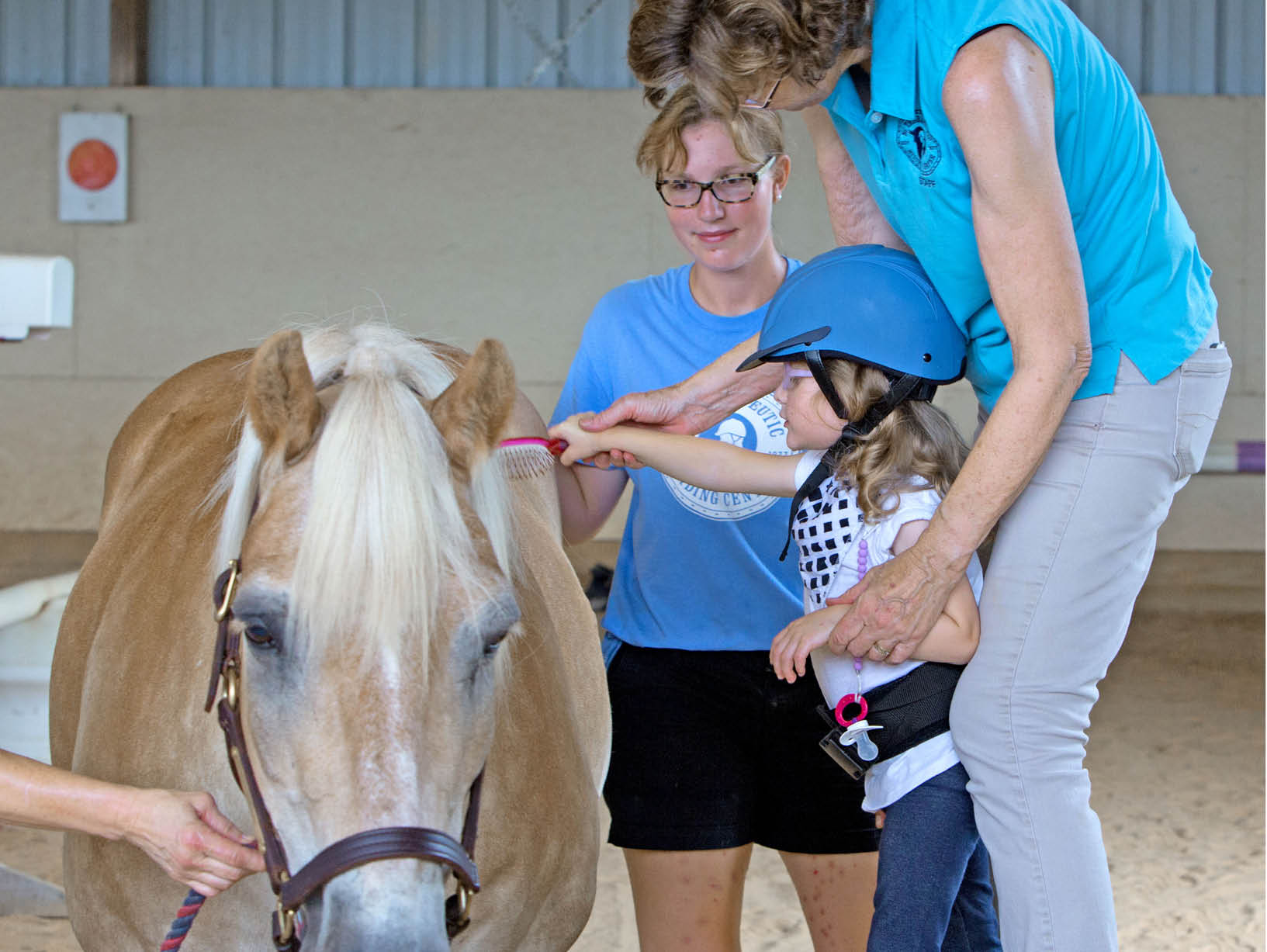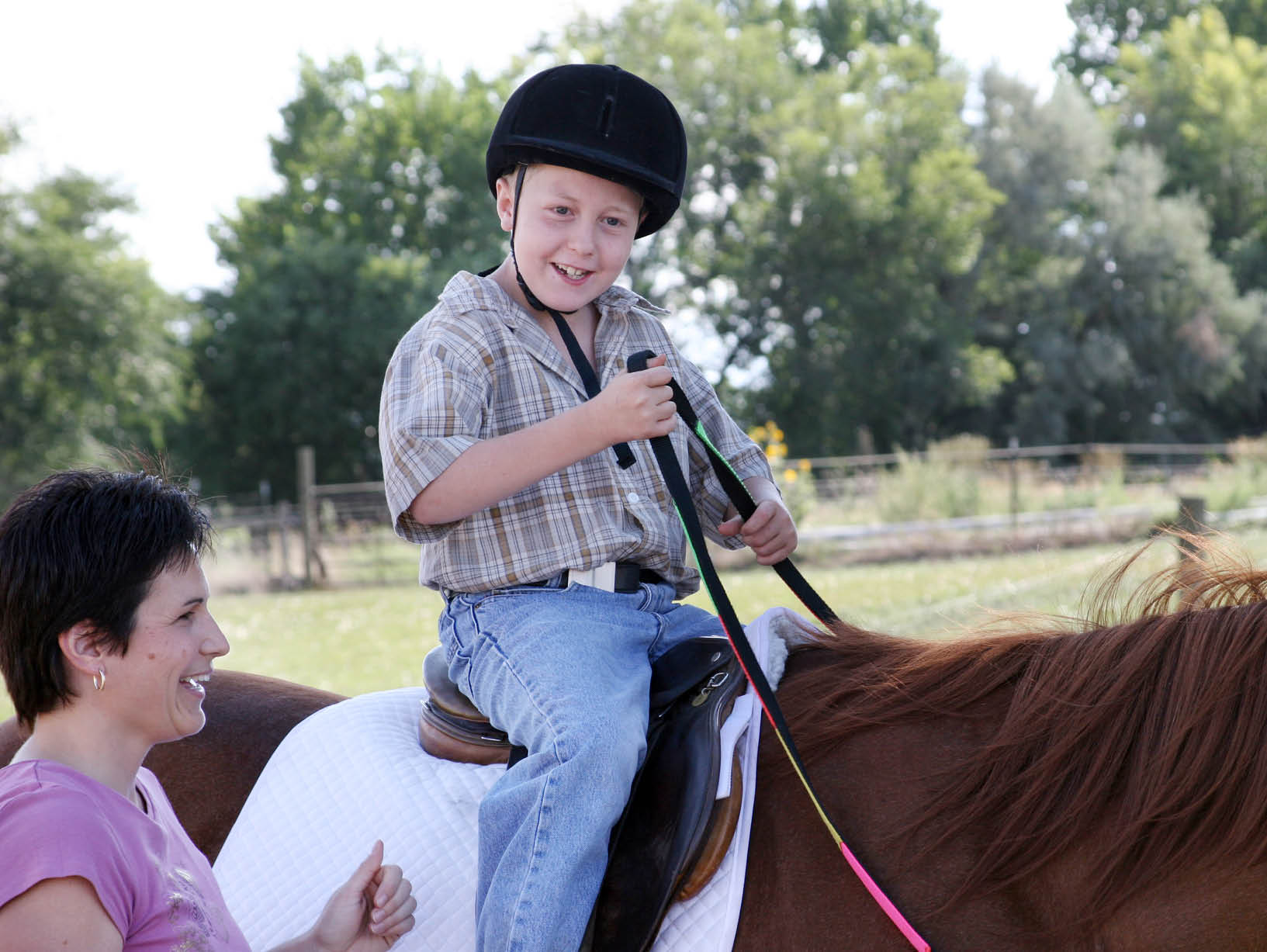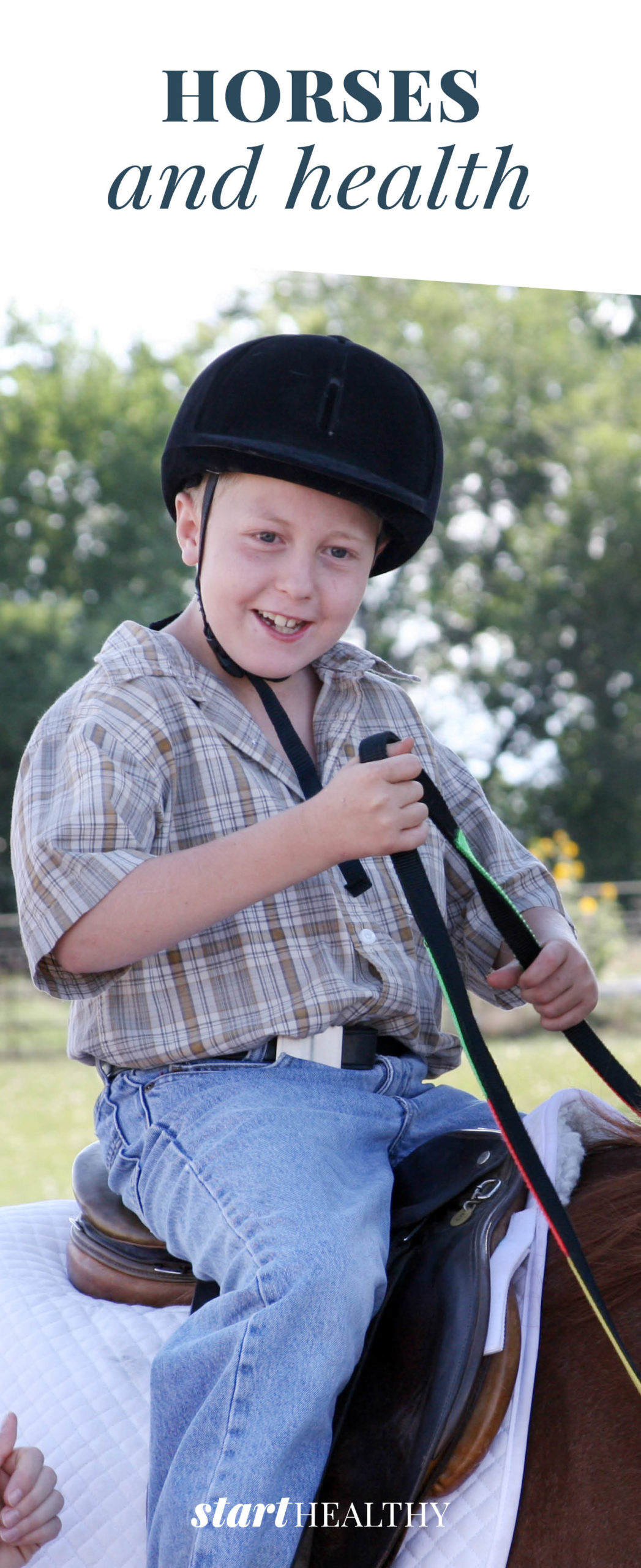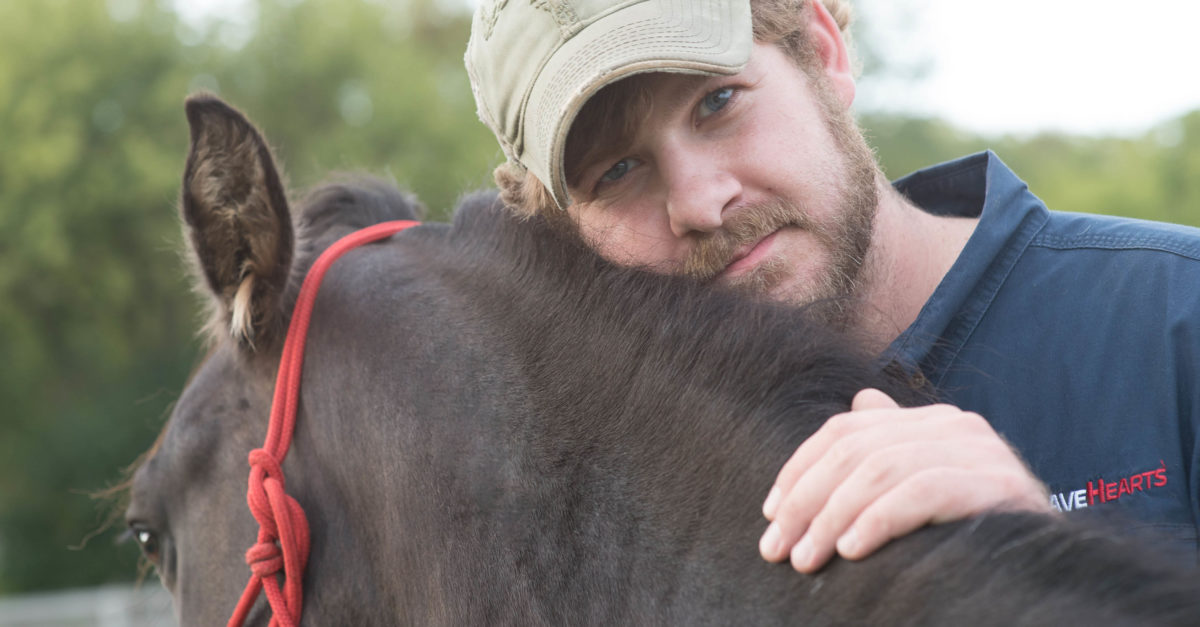Horses and Health
Interview with Cher Smith
Photography by PATH Intl.
More than any other animal, horses have helped make the world what it is. Across the globe and throughout history, equines have helped humans do great things. They can even improve our well-being, and today thousands of people benefit physically and emotionally from equine-assisted services (EAS).
Cher Smith, communications specialist for the Professional Association of Therapeutic Horsemanship International (PATH Intl.), discusses the benefits of professional equine-assisted services.

When was therapeutic horse riding first established? How has it advanced over the years?
Lis Hartel, an award-winning dressage rider from Denmark, is generally regarded as the impetus for the development of therapeutic riding in Europe. Despite being physically impaired by polio, Hartel took the silver medal in Grand Prix dressage at the 1952 Olympics in Helsinki, and medical and equine professionals around Europe soon began to implement programs for riding as a form of physical therapy. Through the dreams, passion, and work of several individuals in the United States and Canada, PATH Intl. was founded in 1969.
Therapeutic riding has developed not only through the rise in numbers of organizations and people served but also through the equine-assisted services offered, such as vaulting, driving, groundwork, and competition. An important aspect of growth has been in PATH Intl.’s accreditation program for centers and its certifications for instructors and professionals. This has led to the creation, publication, and continual review of the PATH Intl. Standards for Certification and Accreditation. This manual details voluntary standards for the equine-assisted services field, demonstrating the PATH Intl. commitment to the safety and well-being of all involved, including the horses.
What’s the difference between therapeutic riding and hippotherapy?
A lot, although it may not seem like it. Therapeutic riding is recreational horseback riding lessons adapted to individuals with disabilities that’s overseen by a PATH Intl. instructor who has been certified and is experienced with equines and has knowledge of disabilities. Hippotherapy, on the other hand, is not geared toward advancing horsemanship skills. It is physical, occupational, or speech therapy implemented by a licensed therapist.
We are always asked if we have “hippotherapists.” While the term is often used, there is no such occupation as a hippotherapist. Those who conduct hippotherapy sessions are physical and occupational therapists and speech/language pathologists. Hippotherapy is the treatment strategy these licensed professionals use to achieve functional outcomes for their clients.

A horse is a large, strong animal. Why is it good for helping people?
Because of a horse’s size, both kids and adults can benefit from equine-assisted services. Horses are also kind and gentle. Because they are prey animals, they are very aware of their surrounding environment and know who they can trust. They are intuitive and reactive, in a sense mirroring the emotions of participants. This makes them bond more quickly, and it provides a good deal of information to the instructor or therapist about a participant’s emotional state.
How does PATH Intl. vet which horses can be used?
It would be wonderful if every horse donated to a center could become a center equine. Each PATH Intl. center is a part of our international organization but operates as an individual entity. Vetting horses is a center’s responsibility. They know what horses they need for their operation. For instance, if one center has mainly small children as participants, it won’t do much good to have huge draft horses. Many centers will have their veterinarian check the horse for general health. Some horses are in ill health or are too old to be considered good partners for a center.
How do these services help a person’s physical, emotional, and social well-being?
Physically, a horse’s gait is similar to a human’s and can therefore offer some of the same benefits as walking. Balance is improved, as are core strength, circulation, breathing, and flexibility.
Emotionally, bonding with a large animal can be satisfying and comforting. Horses are not judgmental but rather empathetic and compassionate companions. Working together as a team, particularly with an animal that is much larger than oneself, builds self-esteem and confidence.
Socially, equine-assisted services provide a safe space to work, grow, and learn without the fear of judgment. Lessons allow participants to work together toward a goal. However, social interaction doesn’t only happen between the participants. There is a social and emotional bond between horses and humans that increases the overall sense of well-being and of being accepted for both parties.
One more benefit for all participants—it’s fun!

How do your offerings specifically help military veterans?
Veterans of any age can benefit from the PATH International Equine Services for Heroes program. Veterans with mobility impairments, including spinal cord injuries or amputations, may benefit from the horse’s movement to improve their balance, posture, and core strength, among other physical benefits. Many veterans also feel a loss of community after leaving the service; equine-assisted services provide an opportunity to bond with other veterans and can give them a renewed sense of purpose. These types of services give veterans, including those with post-traumatic stress, an opportunity to learn and practice emotional regulation, distress tolerance, and resilience. These skills can lead to increased self-confidence and self-worth.
How important are volunteers to PATH Intl.’s effort?
They are vital! Whether you are talking about the individual center level, where volunteers help with activities, equines, and participants, or at the PATH Intl. organizational level, we honestly couldn’t do it without them. From an organizational standpoint, our volunteers serve on committees and subcommittees to oversee the certification process or help write the PATH Intl. standards that govern our organization.
If someone is interested in equine-assisted services, how can they get started?
The first step would be to talk to your specialist to see if they could incorporate horses in their treatment or if that is something they would consider looking into.
For more info, visit pathintl.org









